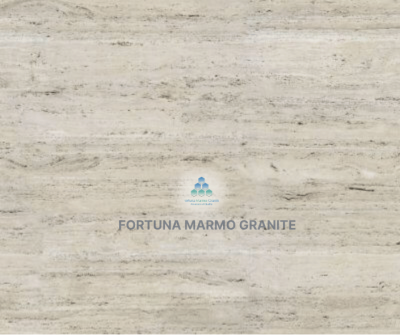Travertine vs. Granite: Key Differences You Need to Know
Travertine vs Granite When it comes to selecting the perfect stone for your countertops, flooring, or other surfaces, the decision often boils down to two premium materials: travertine and granite. Both travertine and granite are admired for their natural beauty, durability, and ability to enhance any space. However, despite their similarities, they have distinct differences that can influence your choice. In this blog, we'll explore the key differences between travertine and granite to help you make an informed decision for your home or project.
What is Travertine?
Travertine is a stunning type of limestone that forms when minerals naturally precipitate from hot or mineral springs. You can often see it in breathtaking locations such as the travertine terraces of Pamukkale, Turkey. Architects have admired this stone for centuries, and iconic landmarks like the Roman Colosseum beautifully display its timeless charm.
The stone develops in natural layers, creating a distinctive texture with visible pores and small cavities. Travertine usually appears in shades of creamy white, beige, gold, and warm earth tones like brown and rust. However, because it is porous, homeowners must seal it properly to protect it from stains and damage. In addition, regular maintenance is essential in high-moisture areas such as bathrooms and kitchens to preserve its beauty and strength.
What is Granite?
Granite, on the other hand, is an igneous rock that forms from the slow crystallization of magma beneath the Earth's surface. This stone is known for its unparalleled durability, stunning appearance, and wide variety of colors and patterns. Granite countertops are a popular choice for kitchens and bathrooms due to their resistance to heat, scratches, and stains.
Unlike travertine, granite's surface is more solid and non-porous, making it easier to maintain. While granite still needs to be sealed periodically, it is generally more resistant to damage compared to travertine.
1.Durability and Maintenance
Travertine:
Travertine is a softer stone compared to granite, and while it is still durable, it is more prone to scratching, chipping, and cracking, especially in high-traffic areas. The pores in travertine, while giving it a unique look, can also trap dirt and bacteria if not sealed properly. This makes regular maintenance and sealing essential for preserving the beauty and longevity of travertine surfaces.
Granite:
Granite is one of the most durable natural stones available, making it an excellent choice for high-use areas like kitchen countertops. It is highly resistant to heat, scratches, and stains, which makes it more forgiving in everyday use. Although granite requires periodic sealing, it is generally much easier to maintain and clean than travertine, as it is non-porous and resistant to water absorption.
2.Appearance and Aesthetic Appeal
Travertine:
Travertine is known for its natural warmth and elegance. It typically has a matte finish, and its appearance can range from light cream to rich gold, beige, and brown shades. The natural pores and holes in travertine give it a rustic charm and an organic feel. This stone works exceptionally well in traditional or Mediterranean-style interiors, where its earthy tones and textures can complement the overall design.
Granite:
Granite has a polished, smooth surface that gives it a sleek and sophisticated appearance. It comes in a wide array of colors, from vibrant blues and reds to deep blacks, greens, and whites. Granite's characteristic speckles or veins give it a striking visual appeal that works in a variety of design styles, from modern and contemporary to classic and traditional. Whether you choose a bold color or a more subtle tone, granite can easily blend with almost any interior décor.
3.Cost Considerations
Travertine:
Generally, travertine is less expensive than granite, making it a more budget-friendly option for homeowners who want the beauty of natural stone without breaking the bank. The price of travertine varies depending on factors like quality, finish, and source, but overall, it tends to be more affordable than granite.
Granite:
Granite is typically more expensive due to its superior durability and the complex process of quarrying and cutting it into slabs. The price of granite can vary significantly based on factors such as color, pattern, and rarity, with some exotic granite types fetching higher prices. However, given its longevity and resistance to damage, many consider the higher initial cost of granite to be a worthwhile investment.
4.Porosity and Staining Resistance
Travertine:
One of the main drawbacks of travertine is its porosity. The stone's surface is filled with tiny holes and gaps, which can absorb liquids and dirt if not sealed properly. Without regular sealing, travertine is more likely to stain, especially from acidic substances like lemon juice, vinegar, or wine. As a result, homeowners need to be more diligent with cleaning and sealing travertine surfaces to maintain their appearance.
Granite:
Granite is non-porous, meaning it does not absorb liquids or bacteria as easily as travertine. Therefore, it becomes an excellent choice for kitchen countertops where spills are common. Although granite should be sealed periodically to maintain its stain resistance, it is still more resistant to stains than travertine. Moreover, it is easier to clean and maintain in the long run.
5.Use in Different Spaces
Travertine:
Travertine's softer nature makes it ideal for low-traffic areas or decorative features such as backsplashes, wall cladding, and flooring. Many homeowners choose it for bathrooms to create a luxurious, spa-like atmosphere. However, since it can get damaged in high-traffic areas, it's best to use travertine where it won't face heavy wear and tear.
Granite:
Granite is extremely durable, making it an excellent choice for high-traffic areas such as kitchens and commercial spaces. Moreover, it can be used for countertops, backsplashes, flooring, and many other applications. In addition, its strong resistance to heat, stains, and scratches makes it ideal for areas exposed to cooking, food preparation, and daily activities.
6.Installation and Care
Travertine:
Installing travertine requires careful handling because of its relatively soft nature. Improper installation can cause cracks or surface damage. To maintain its beauty and prevent stains—especially in moisture-rich areas like bathrooms—you should seal travertine periodically.
Granite:
Granite installation requires skilled professionals to ensure that the slabs are cut and installed properly. While granite is easier to care for compared to travertine, it also requires sealing to maintain its stain resistance and durability over time.
Conclusion
Travertine vs Granite Both travertine and granite bring timeless beauty and elegance to any space. The best choice for your home depends on your specific needs, style, and budget. If you prefer a rustic, natural look at a more affordable price, travertine is an excellent option. But if you want a durable, low-maintenance, and versatile stone that can handle daily wear and tear, granite is the better choice.
Travertine vs Granite, For homeowners who want the best of both worlds, Fortuna Marmo Granite offers a range of natural stone options, Travertine vs Granite including both granite and travertine, to suit any design vision. Whether you're renovating your kitchen or designing a new bathroom, our stone experts are here to help you choose the perfect material that fits your style, budget, and functionality needs.
Make an informed decision and choose the perfect stone for your space!



